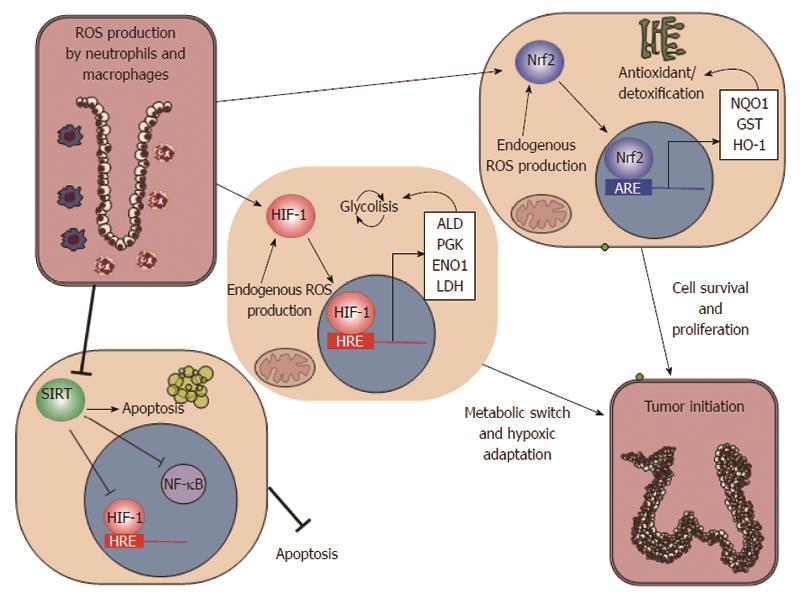Copyright
©2014 Baishideng Publishing Group Inc.
World J Gastroenterol. Aug 7, 2014; 20(29): 9716-9731
Published online Aug 7, 2014. doi: 10.3748/wjg.v20.i29.9716
Published online Aug 7, 2014. doi: 10.3748/wjg.v20.i29.9716
Figure 2 Oxidative microenvironment in the inflammatory milieu of colorectal mucosa.
Inflammation leads to an oxidative microenvironment with consequent modification of cell metabolism. The major players of these changes is hypoxia inducible factor 1 (HIF1), nuclear factor erythroid 2-related factor 2 (Nrf2), and sirtuins (SIRT). HIF1 activation supports the metabolic switch to anaerobial metabolism [fructose-1,6 bisphosphate aldolase (ALD); phosphoglycerate kinase (PGK); enolase 1 (ENO1); lactate dehydrogenase (LDH)]. Nrf2 is involved in the antioxidant defences of epithelial cells [NAD(P)H dehydrogenase (NQO1); glutathione S-transferase (GST); heme oxygenase-1 (HO-1)], while sirtuins affect apoptosis and anti-inflammatory genes.
- Citation: Mariani F, Sena P, Roncucci L. Inflammatory pathways in the early steps of colorectal cancer development. World J Gastroenterol 2014; 20(29): 9716-9731
- URL: https://www.wjgnet.com/1007-9327/full/v20/i29/9716.htm
- DOI: https://dx.doi.org/10.3748/wjg.v20.i29.9716









